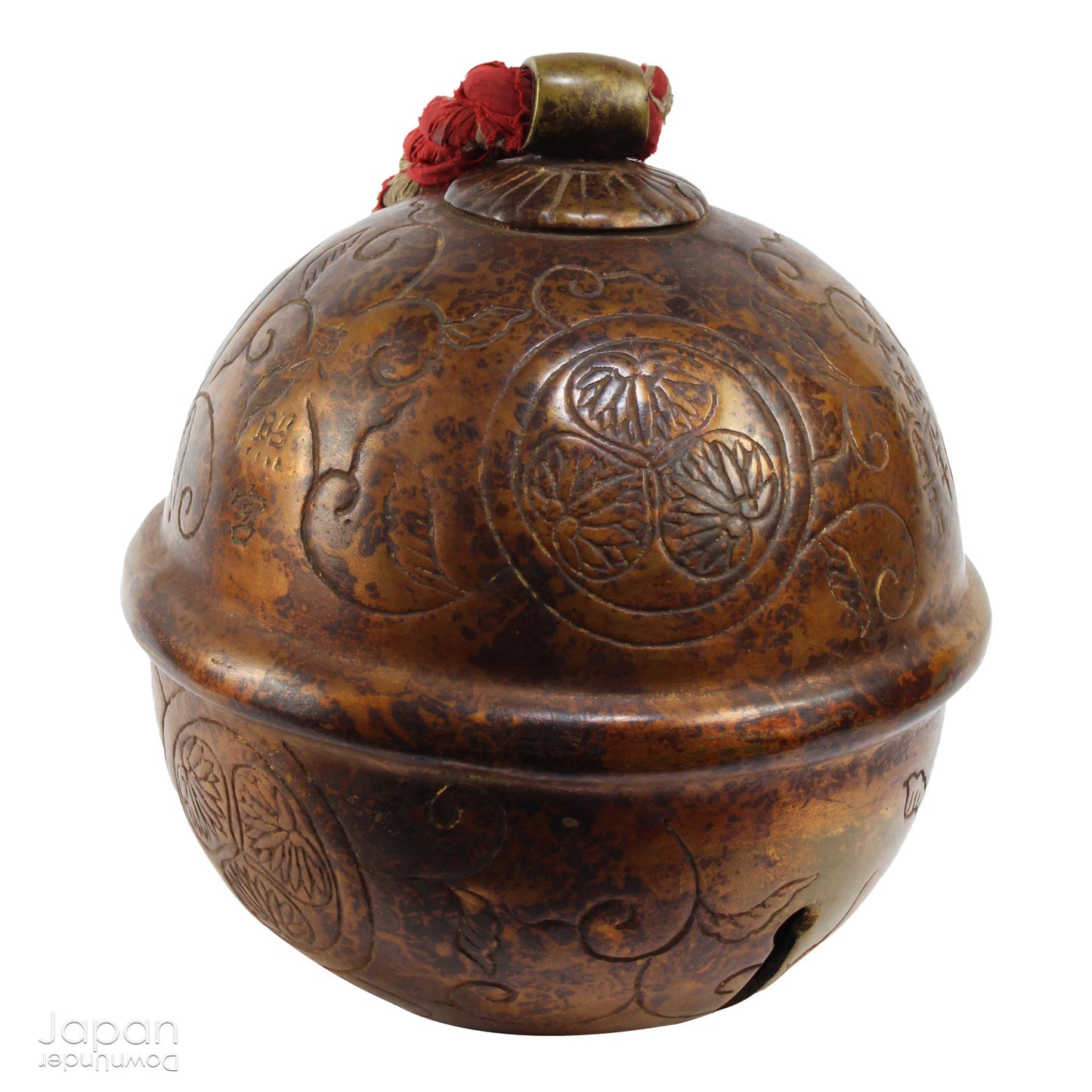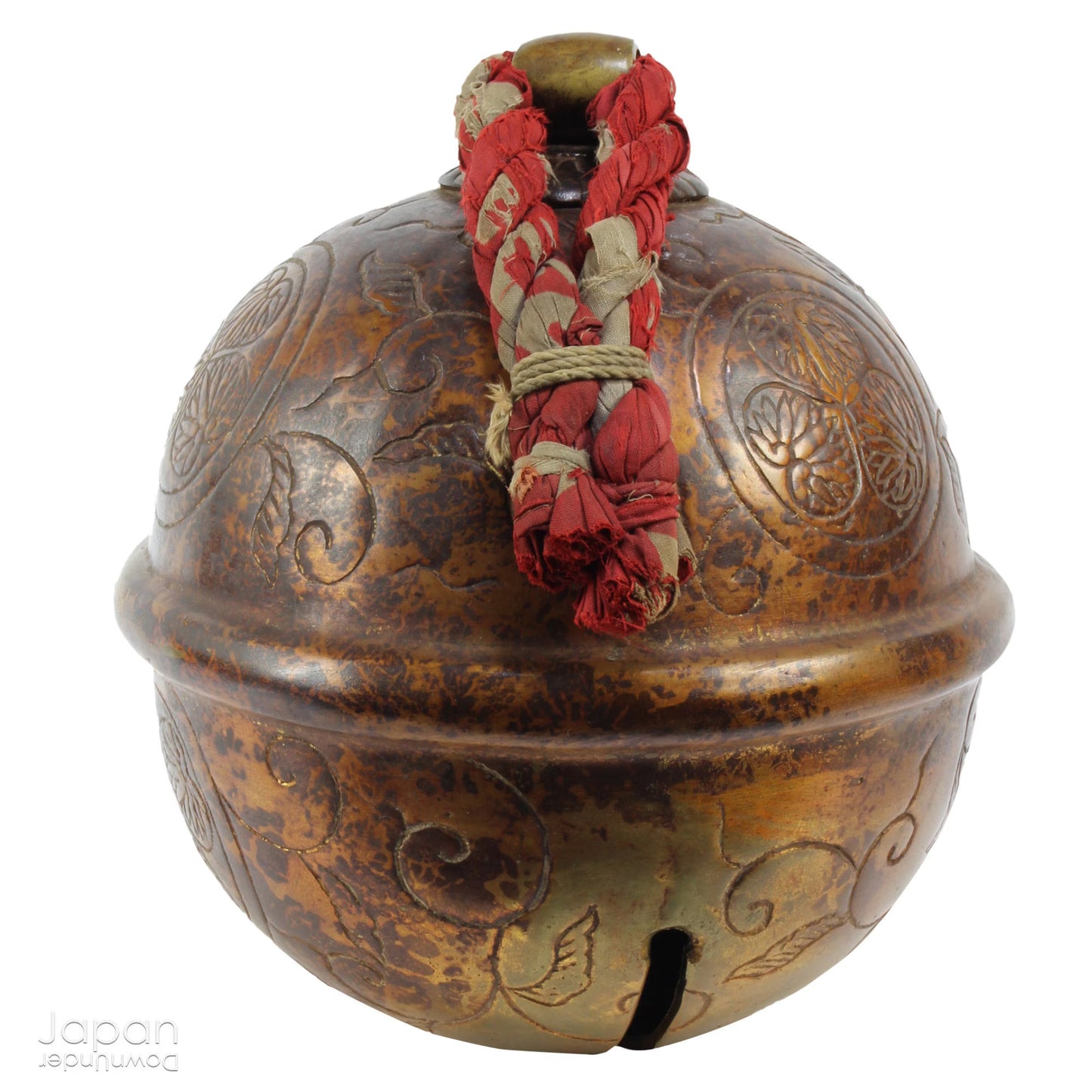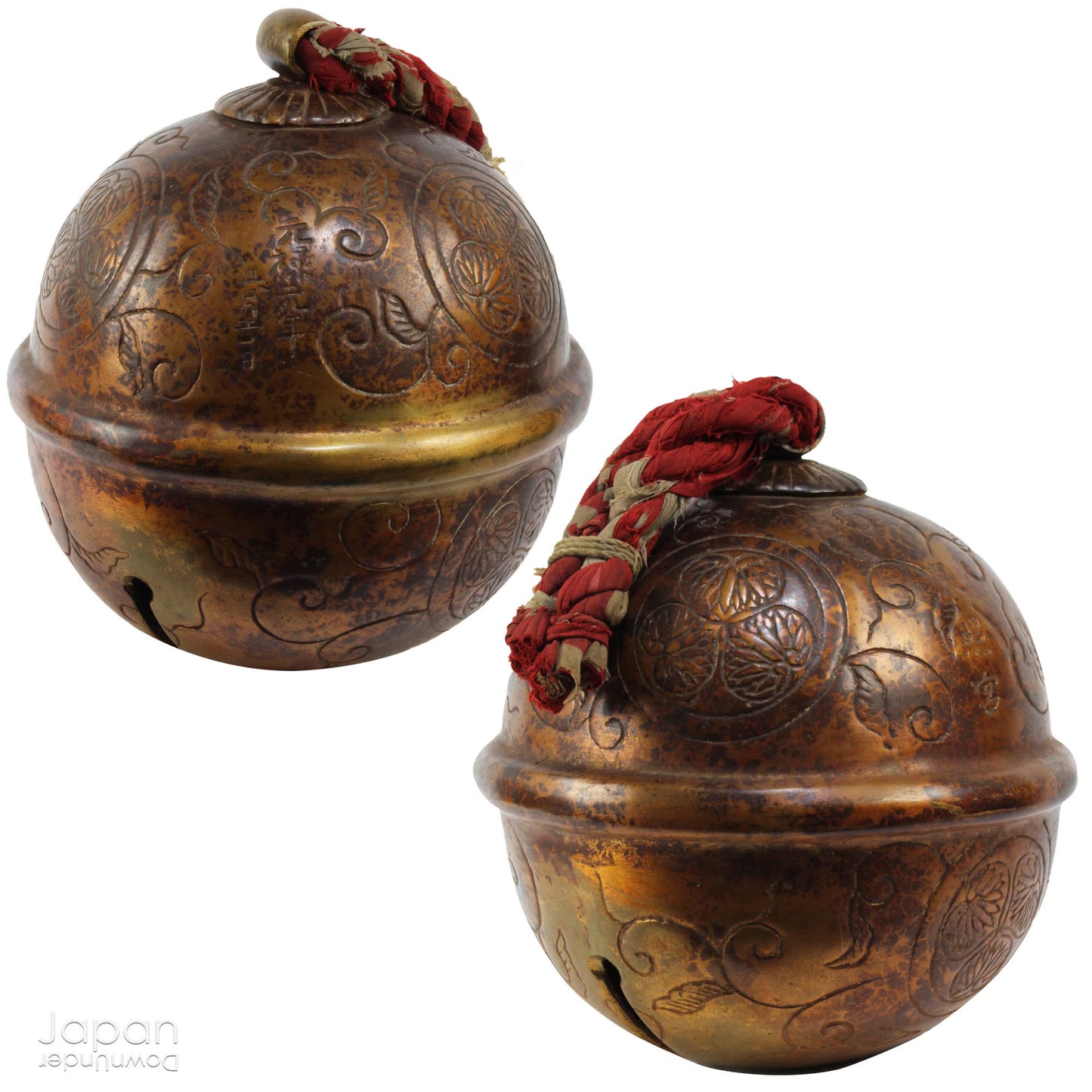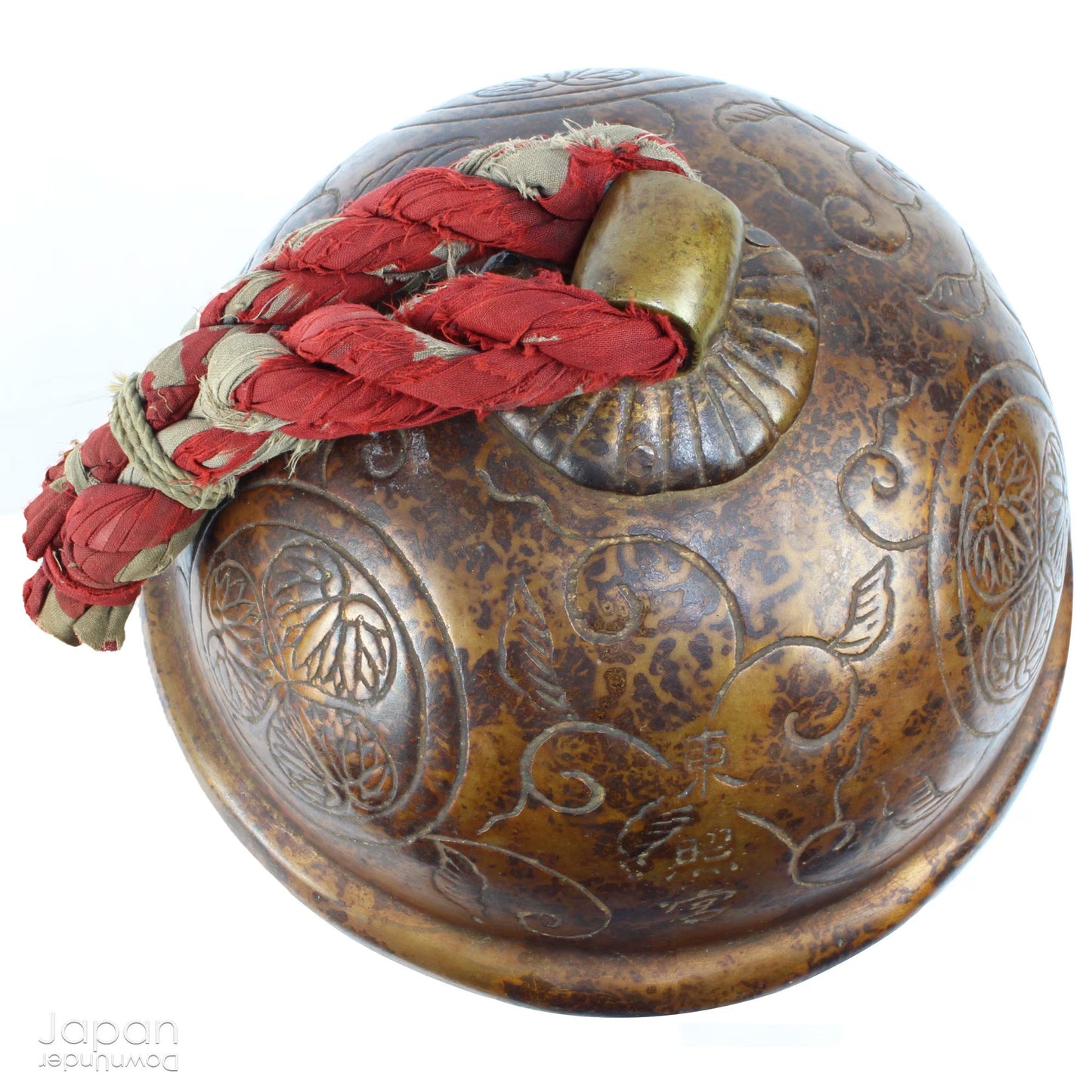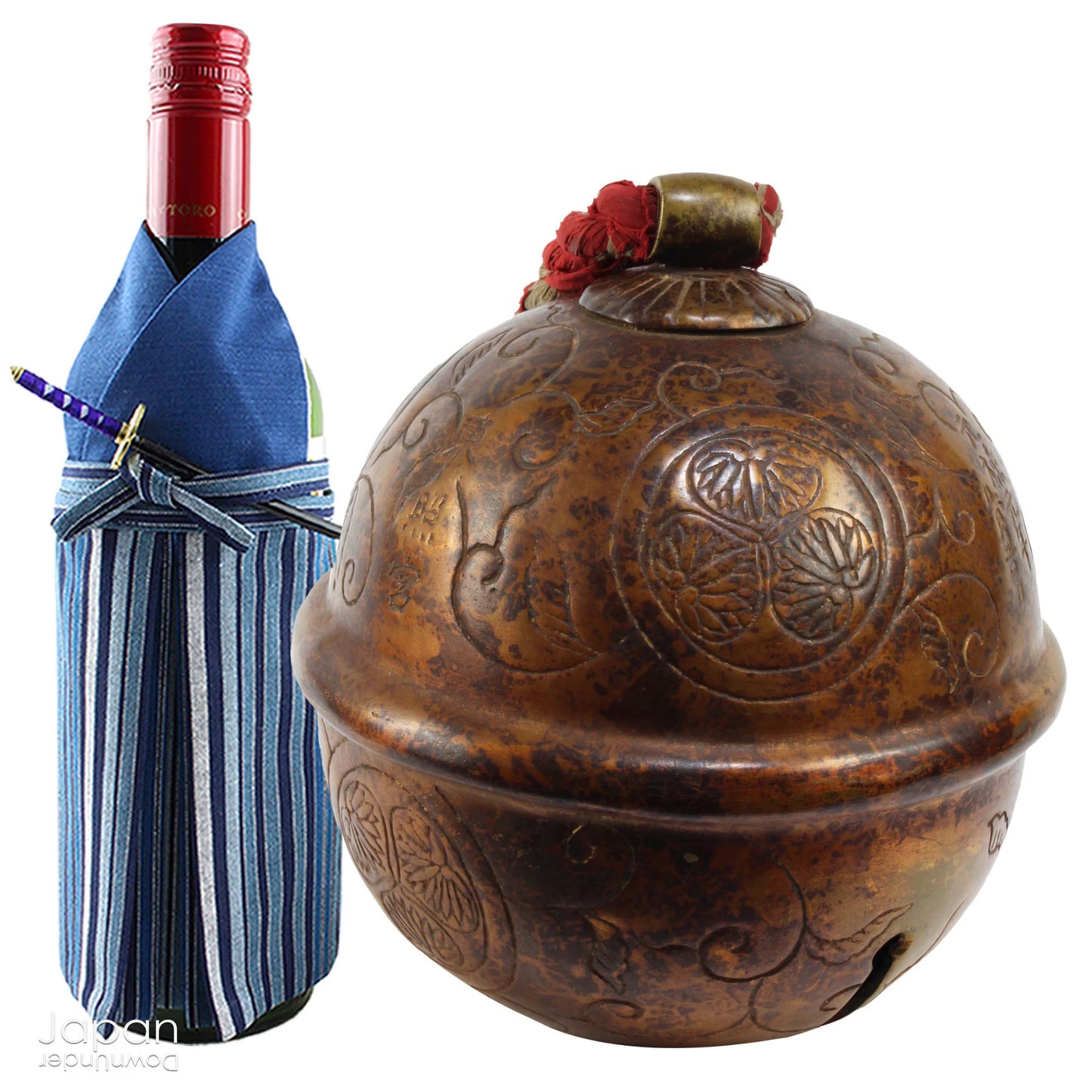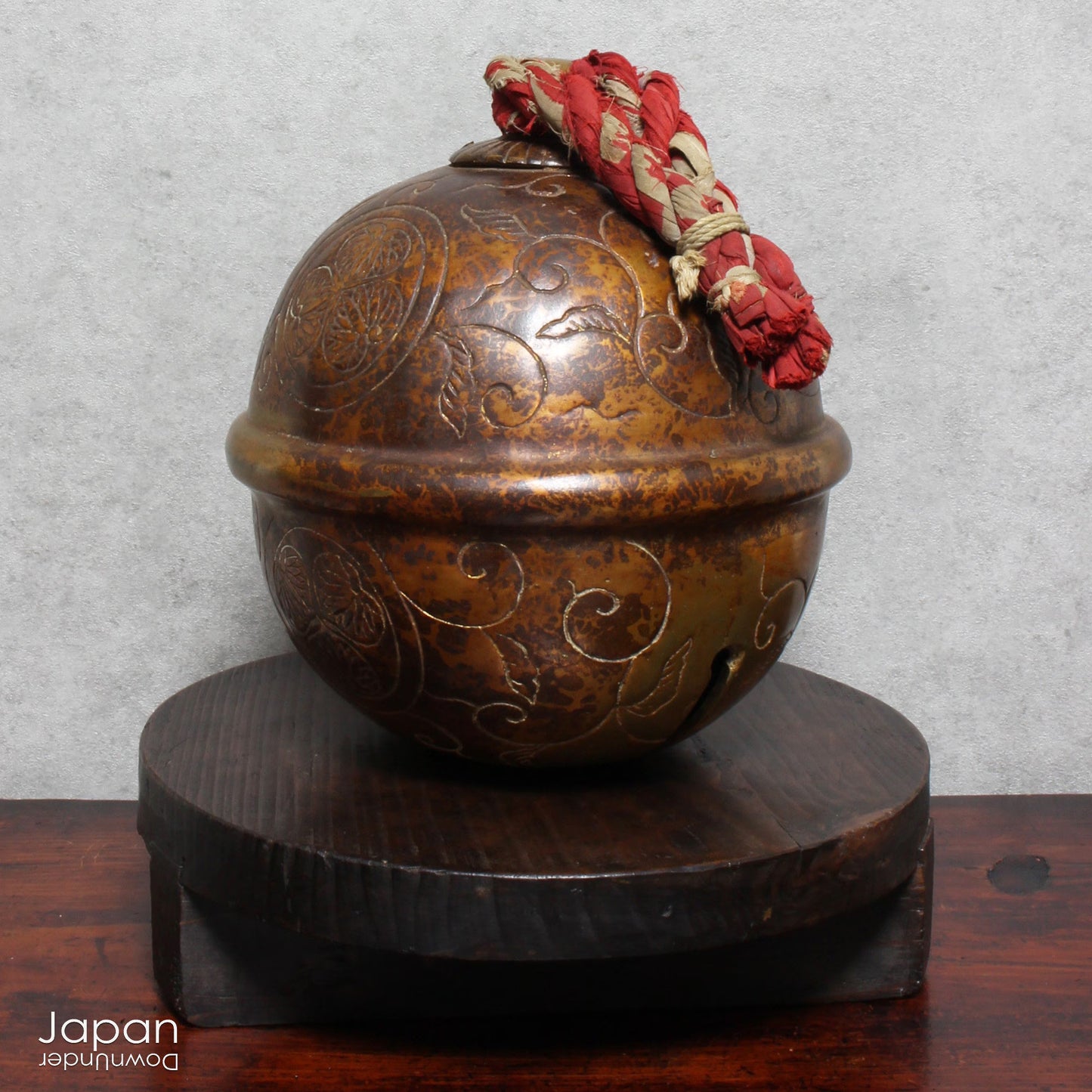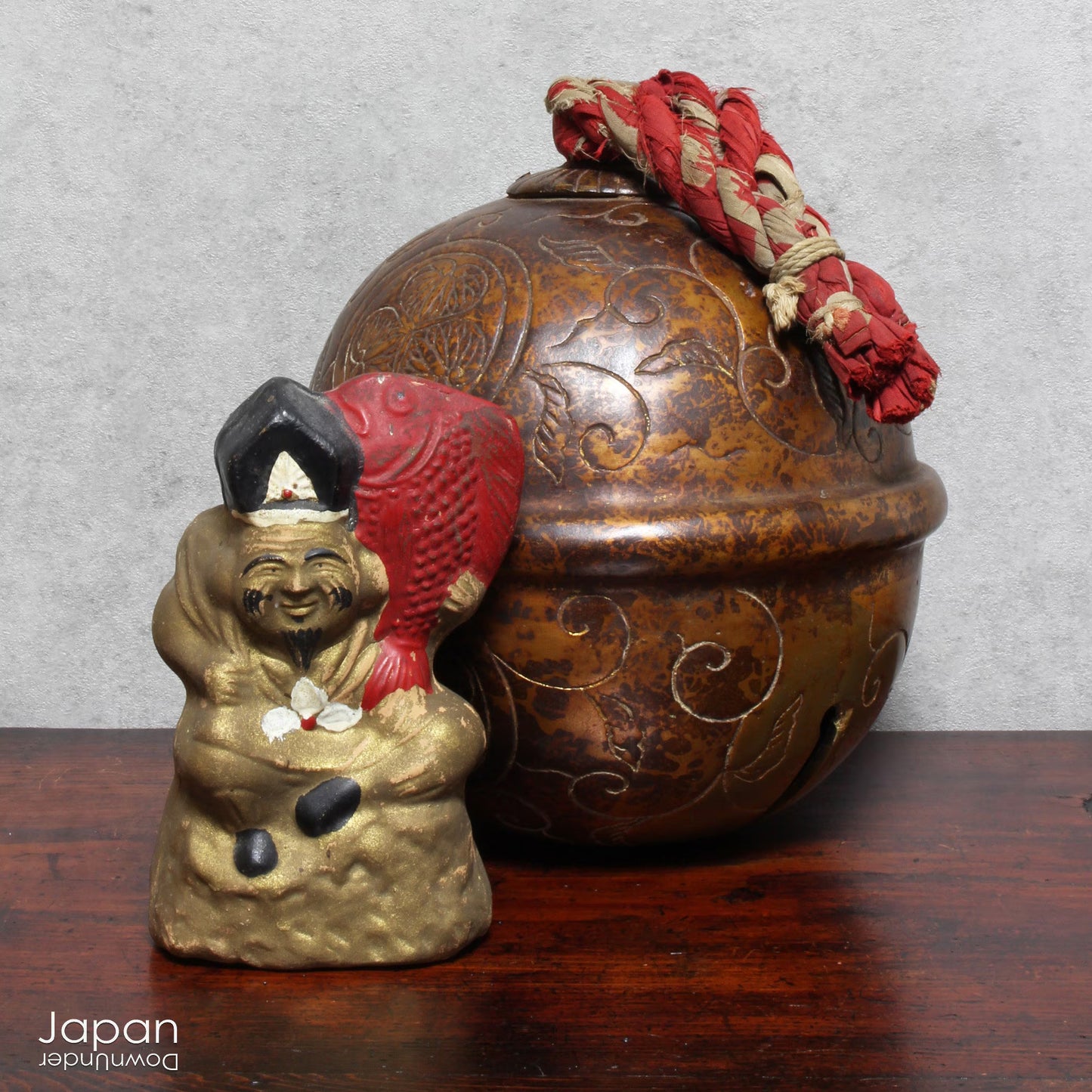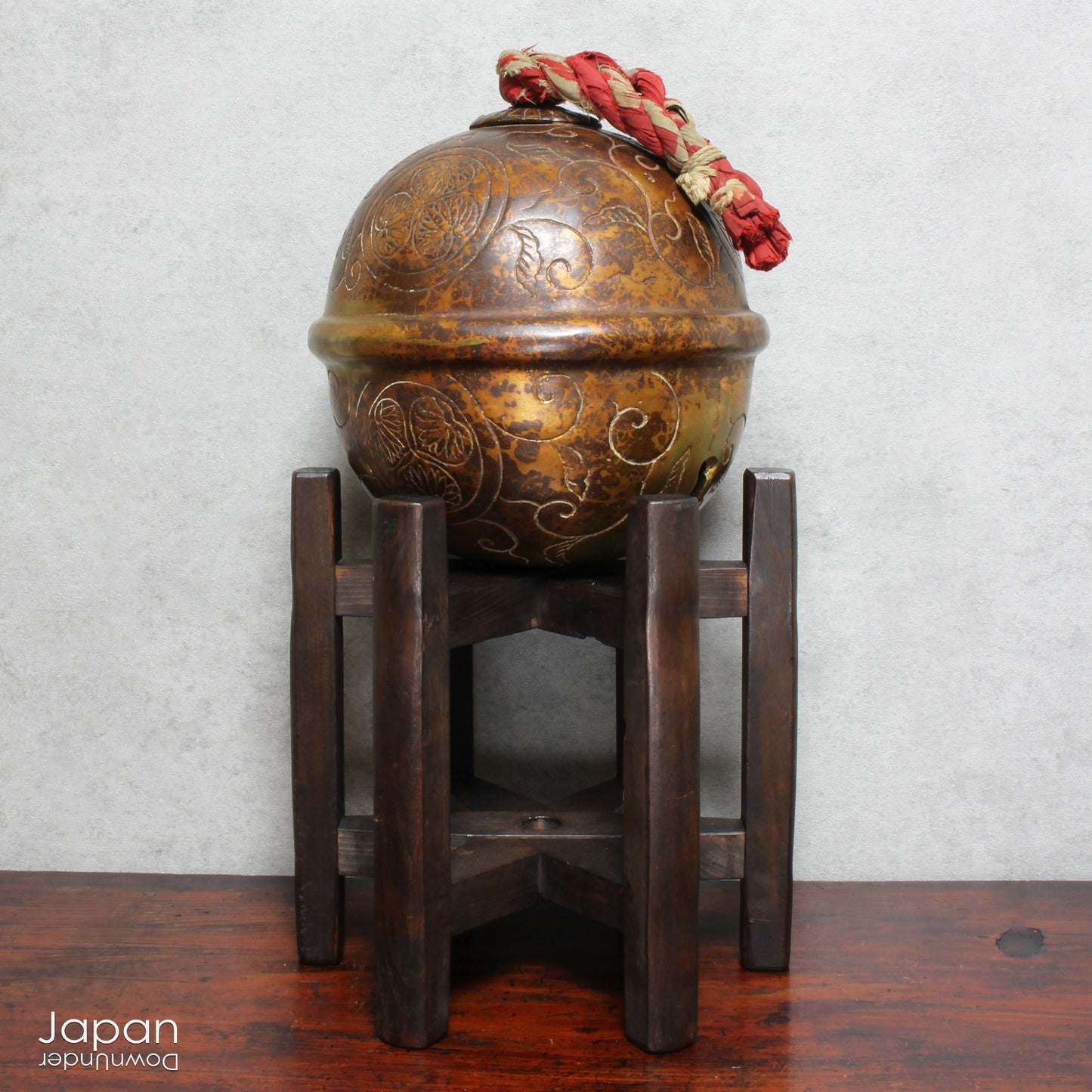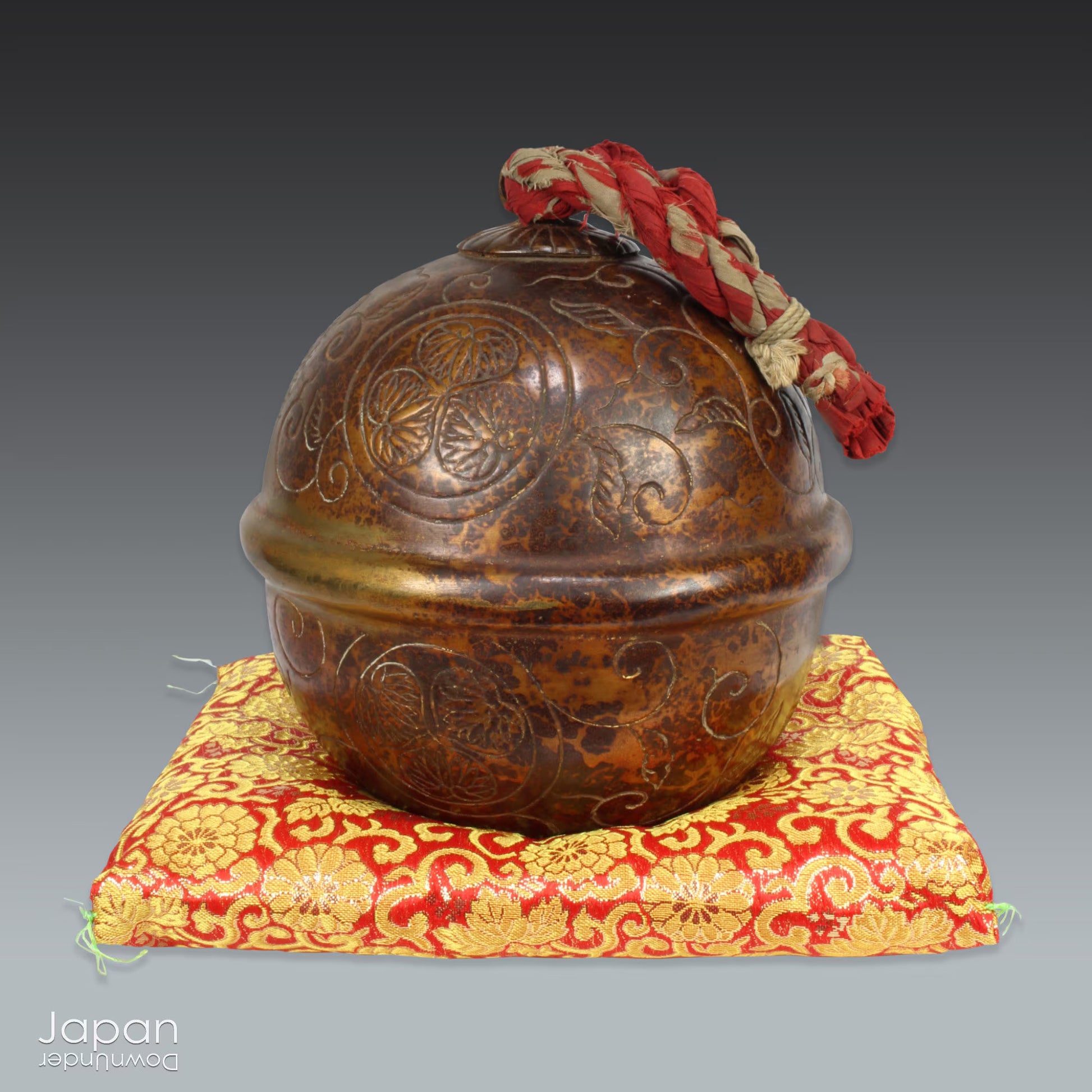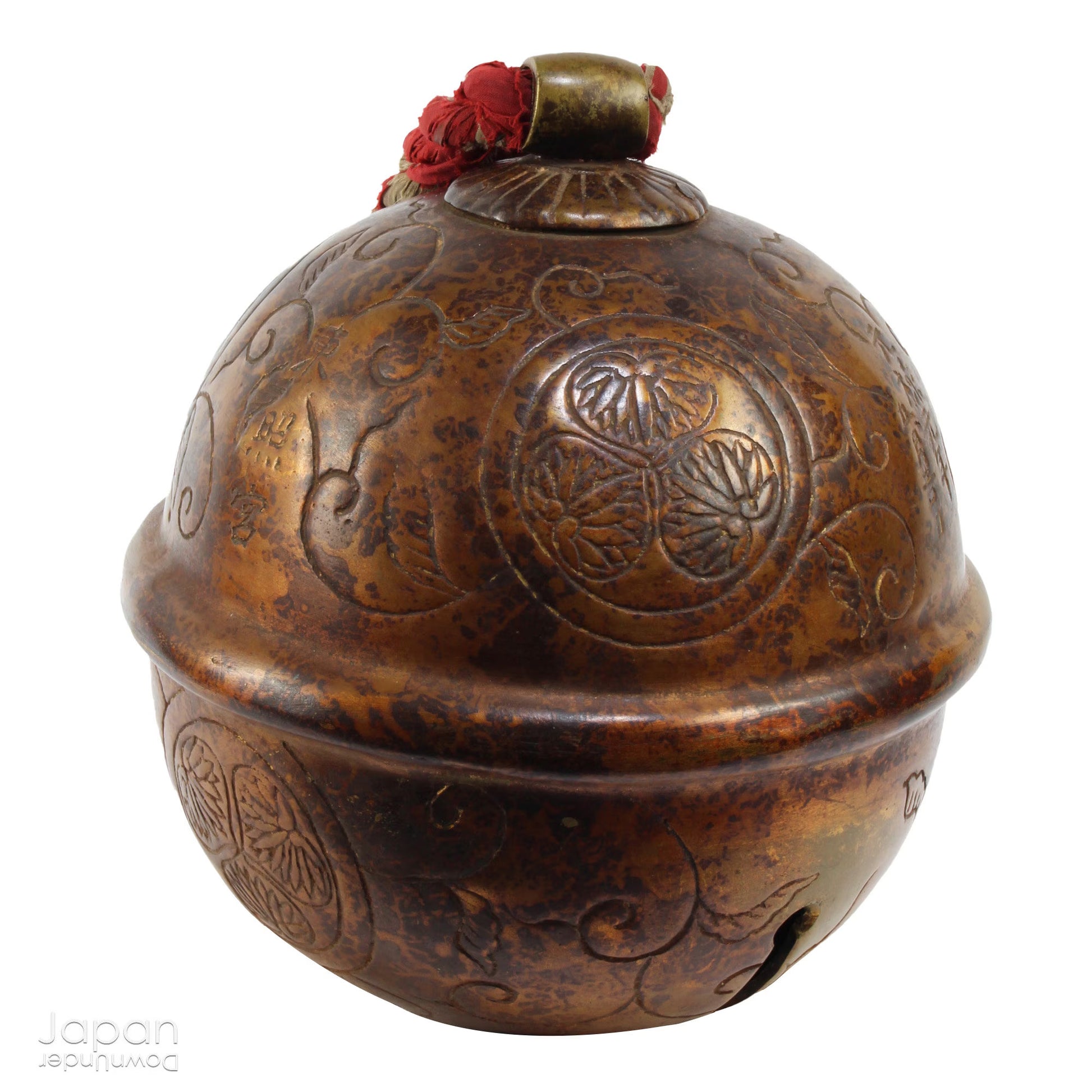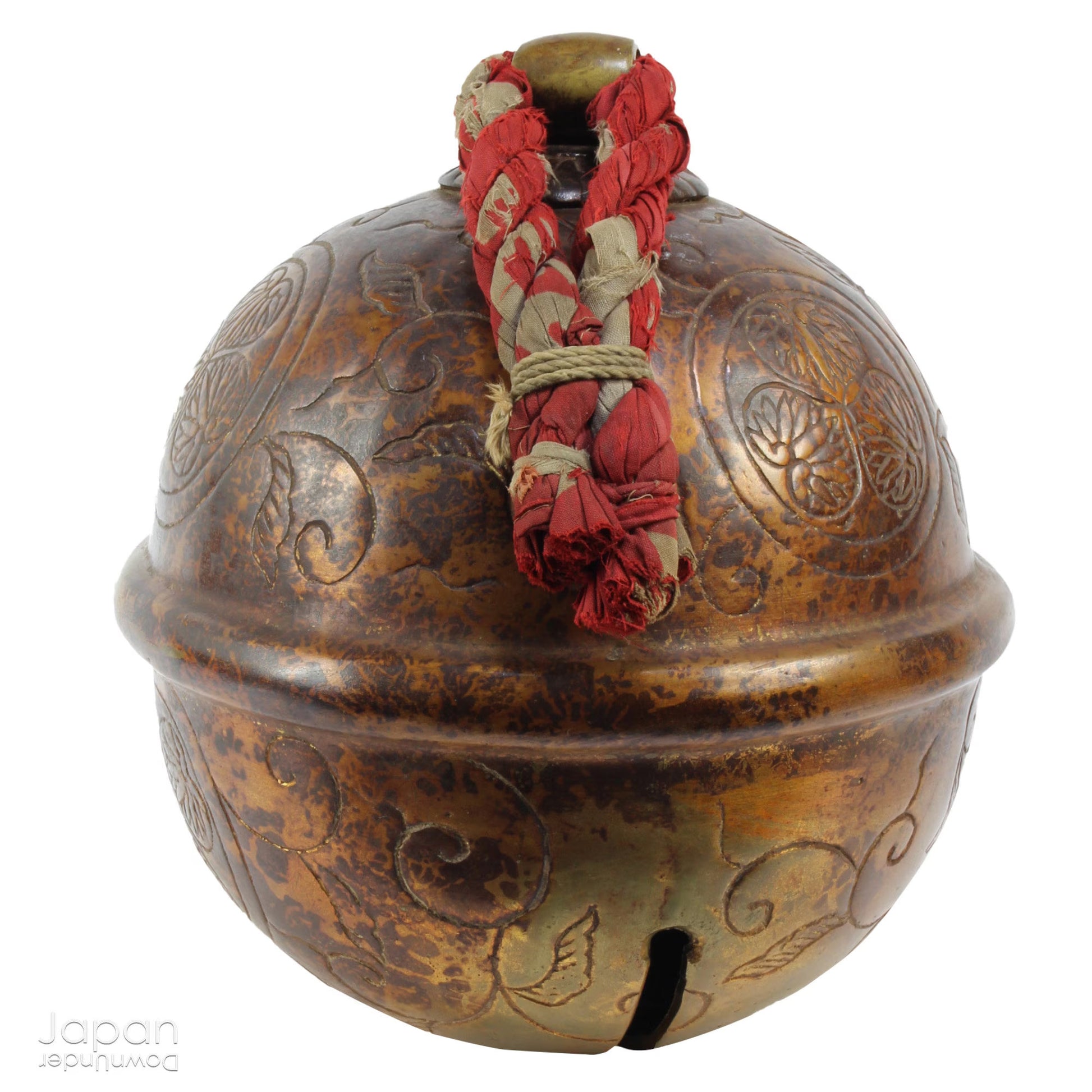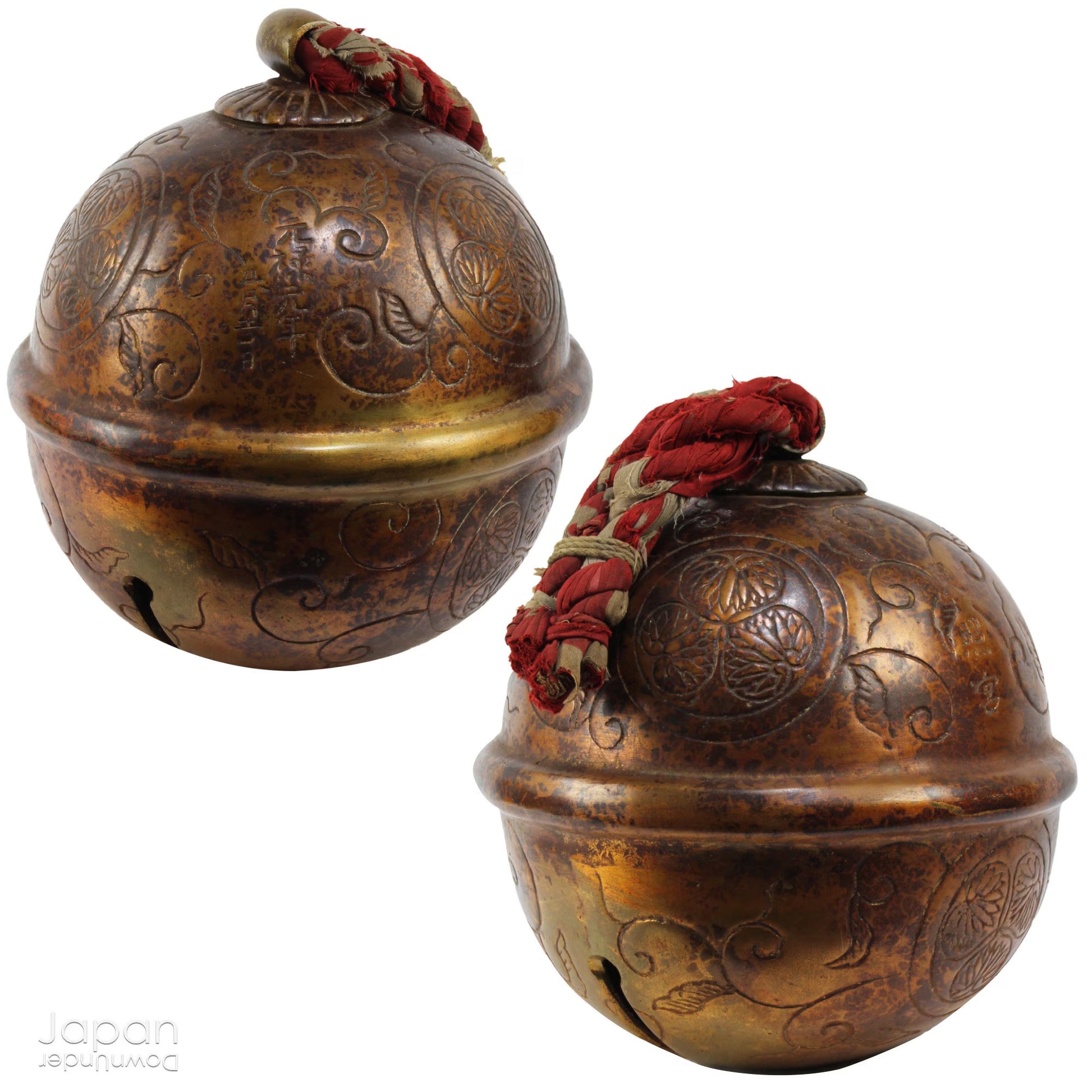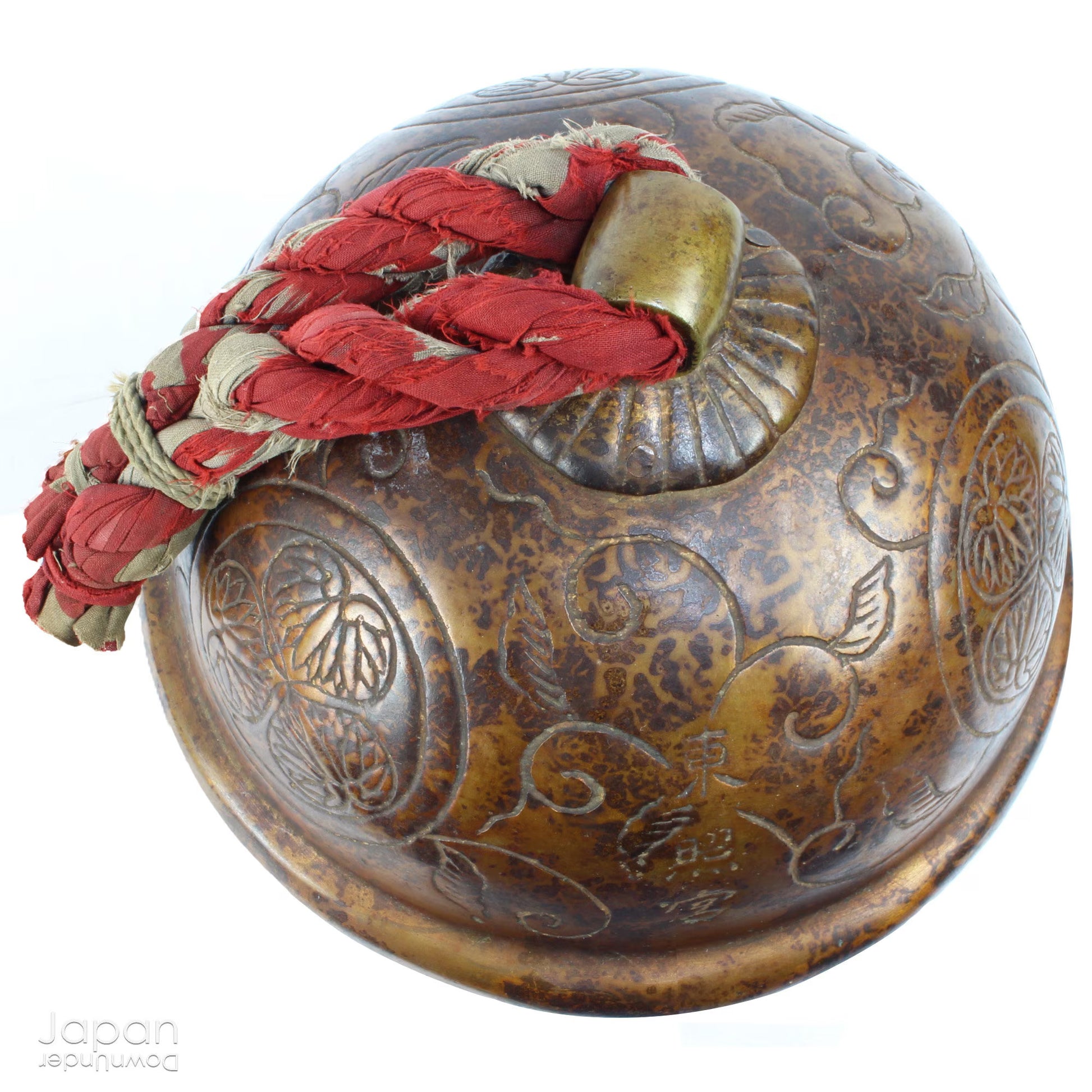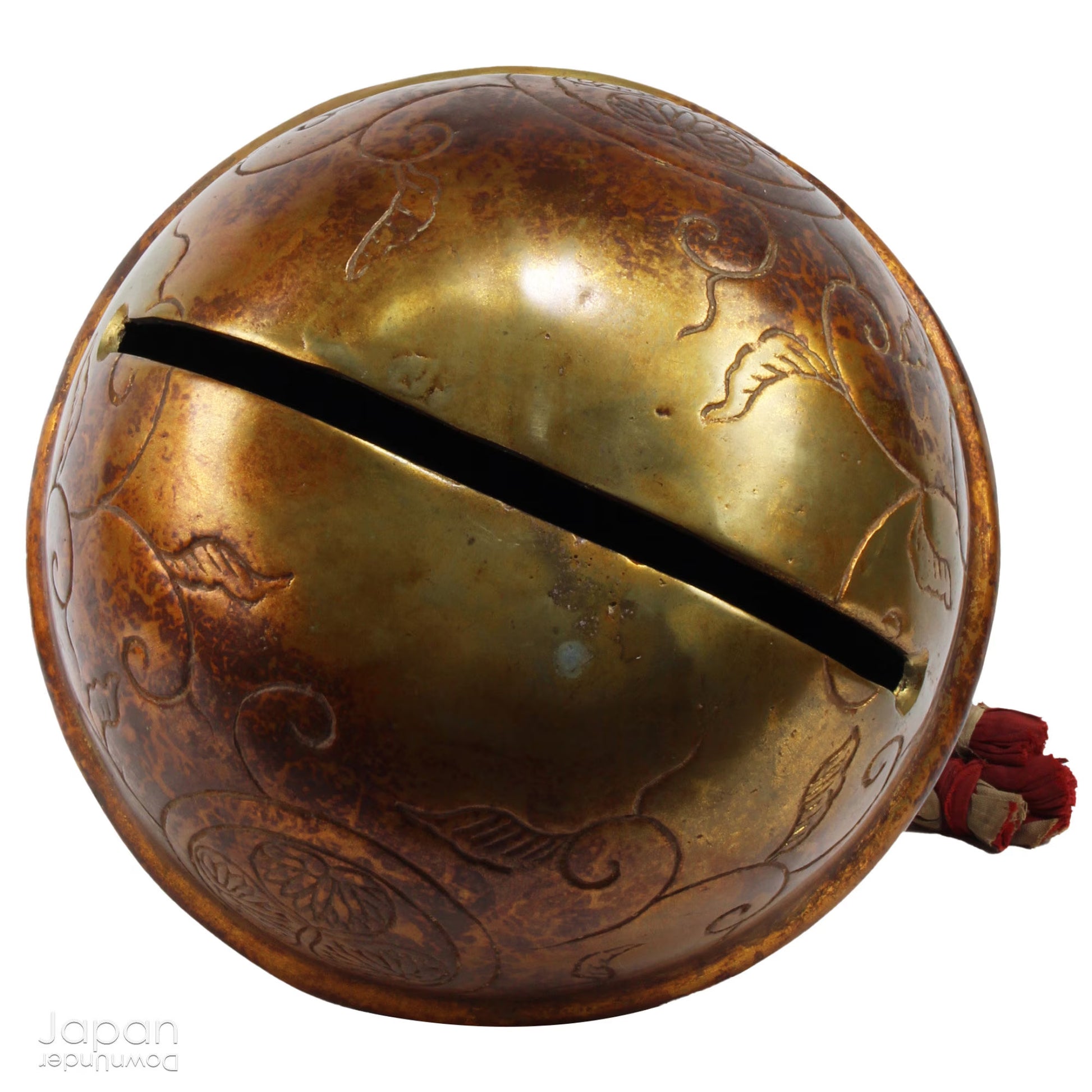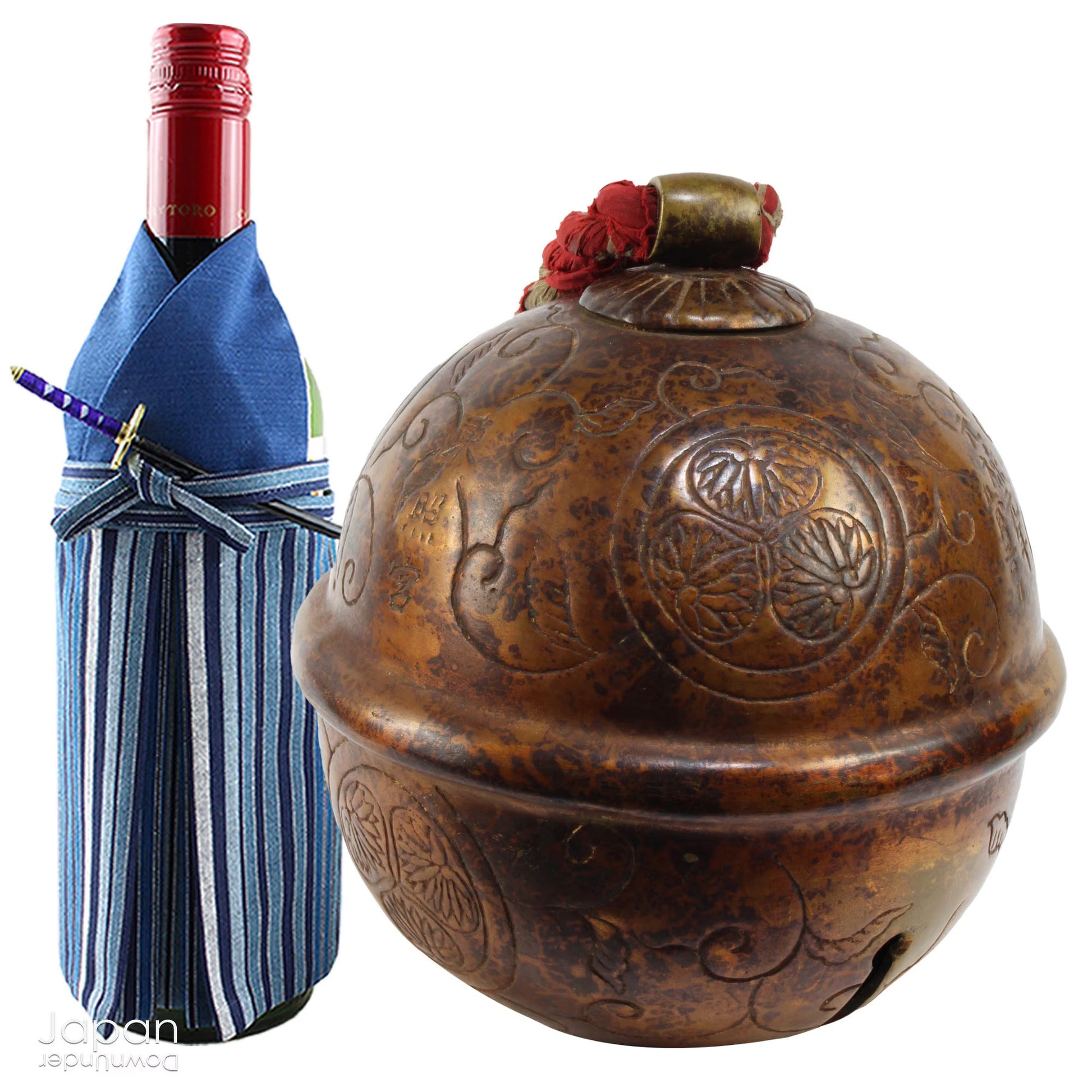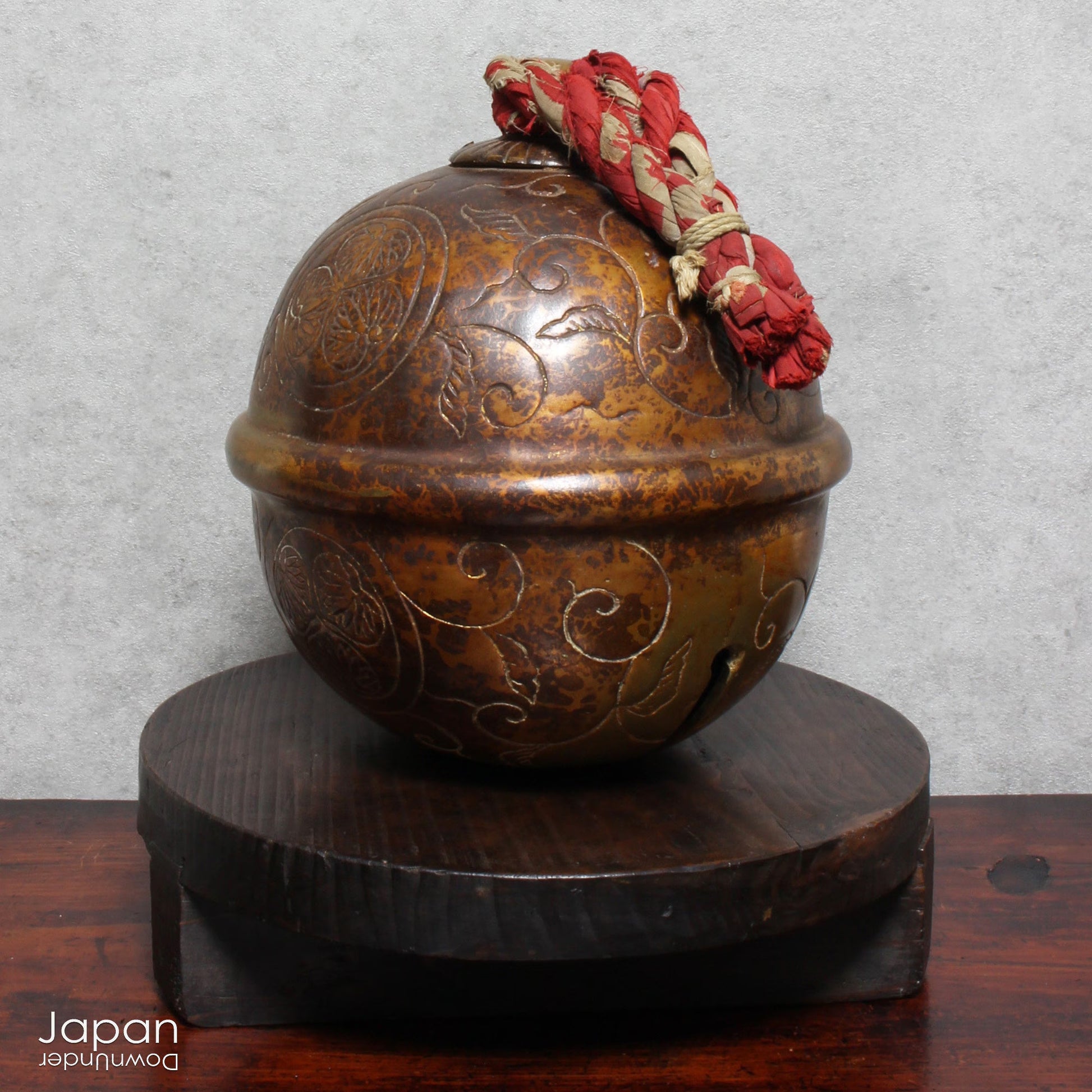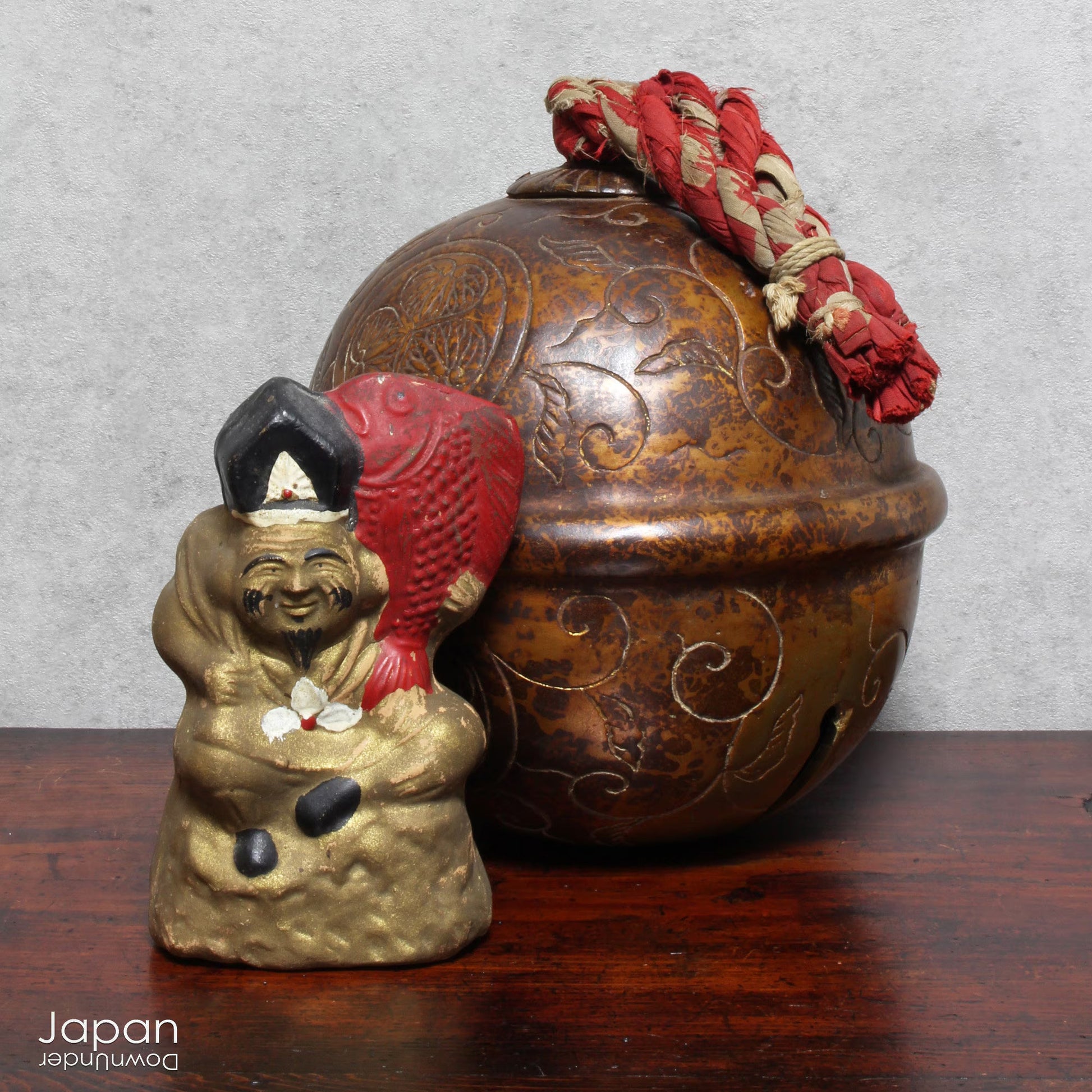JapanDownUnder
japanese antique decorative bronze bell with floral art - shinto shrine protection charm
japanese antique decorative bronze bell with floral art - shinto shrine protection charm
Couldn't load pickup availability
Love Japanese Style Like We Do
Add a touch of old-world mystique to your home with this stunning, large antique bronze Toshogu shrine bell. Rich with character and history, this extraordinary piece features a beautifully aged patina and intricate etched embellishments that make it a captivating focal point in any room. A true conversation starter, it seamlessly blends spiritual symbolism with refined artistry.
Traditionally suspended in front of worship halls, these grand bells are rung to summon the attention of the kami (deities), inviting their presence, purifying the space, and warding off malevolent spirits. Their deep, resonant tones are believed to offer protection and divine favor.
There are over a hundred Toshogu Shrines across Japan, the most renowned being Nikko Toshogu, dedicated to Tokugawa Ieyasu (1543–1616) - the founder and first shogun of the Tokugawa Shogunate. Enshrined as Tosho Daigongen (Great Deity of the East Shining Light), Ieyasu is honored as one of the three great unifiers of Japan.
This bell bears the sacred Mitsuba Aoi mon - the hollyhock crest of the Tokugawa clan - an emblem reserved exclusively for the Tokugawa family. Surrounding the crest are graceful karakusa (winding vine) motifs, adding to its artistic allure. The inscriptions read: "Dedicated to the shrine in the first year of Genroku," which corresponds to 1688, during the Edo period.
This magnificent bell remains in good antique condition. Its surface displays a lovely mottled gold-and-bronze patina, and the interior pellets still produce a deep, rolling chime said to please the gods. Remnants of the original red and white suzuo hemp pulling rope are still attached, adding a rare touch of authenticity.
A remarkable and weighty treasure - both spiritually and historically - that brings protective energy and elegant beauty to any home or sacred space.
- measures around 25 cm (9.8”) in height x 22 cm (12.6”) in diameter at the widest point.
- weighs 3,900 gm
(listing for shinto bell only)
SHIPPING INFORMATION
- please read the shipping notes in our shop announcement.
- we use recycle packaging and wrap for safety, rather than appearance.
ABOUT OUR VINTAGE, ANTIQUE AND OTHER ITEMS
We list pieces we feel are worthy of display. There may be scratches, dents, fading and signs of wear and tear. We try to explain the condition of each item exactly, but may miss something.
Information regarding the item and it’s age is obtained from dealers and our personal research. We do our best to give you the correct information but please be aware that we cannot guarantee this information.
Please message us prior to purchase with any questions you may have about our products.
LINK TO OUR ETSY HOMEPAGE: https://japandownunder.etsy.com
JAPANESE SUZU - BELLS
Suzu are round, hollow Japanese Shinto bells containing pellets that ring when shaken. They are similar in shape to a jingle bell, but the inside pellets produce a deep, rolling sound.
In Shinto religion, bells have long been used at shrines and in ritual dances to get the attention of gods and bring them down among the people to offer protection. Because of these traditions there is a deeply rooted belief in Japanese culture that the sound of bells wards off evil and brings protection.
The sound of a bell is important in many religions as a call to service. In Japanese religions a person sometimes simply claps their hands to attract the attention of the gods. But in Shinto shrines there are special bells with a long attached rope, suspended from the eaves of the roof at the entrance to the enshrined kami. An offering is made, the rope is tugged to ring the bell loudly and then prayers are commenced. At large shrines there are many bells and they are quite big. In contrast small shrines often have small bells.
Suzu were traditionally made by metal craft artisans, but with the onset of industrialisation, they were made by machines. The ones produced by hand however are still considered to have a richer and more melodious sound.
japanese antique decorative bronze bell with floral art - shinto shrine protection charm
shrine bell, shrine decor, spiritual home decor, shinto, religious art, religious home decor, omamori, traditional japanese, rare find, protection charm, japanese bronze, decorative bell, prayer tools
Bring a touch of old world charm to your space with this large antique bronze Toshogu shrine bell. The beautiful patina and intricate etched embellishments make it a unique and eye-catching decor piece. Perfect for adding a touch of history and elegance to your home.
Large bells like this hang in front of worship halls. The ringing of the bell is thought to get the attention of the kami (god), to bring the kami down amongst the people, to purify and to protect by warding off evil.
There are more than one hundred Toshogu Shrines in Japan, the most famous being Nikko Toshogu, and they all enshrine Tokugawa Ieyasu as their kami. Tokugawa Ieyasu (1543-1616) was the founder and first shogun of the Tokugawa Shogunate of Japan, which ruled from 1603 until the Meiji Restoration in 1868. He was one of the three ‘Great Unifiers’ of Japan. Ieyasu is enshrined as the deity ‘Tosho Daigongen,’ (Great Deity of the East Shining Light).
Toshogu Shrine bells are embellished with the Mitsuba Aoi mon (hollyhock with three leaves); the family crest of the Tokugawa clan. This mon is forbidden to be used by anyone other than the Tokugawa family. Around the circular mon are lovely karakusa (arabesque) designs. The inscriptions on the bells say, ‘dedicated to the shrine in the first year of Genroku.’ Genroku is a period in the Edo era from 1688-1704, making the first year of Genroku 1688.
This wonderful, very heavy old bell, dating around the early to mid 1900’s, is in good antique condition. It has a lovely mottled gold and bronze patina. The inside pellets have a deep rolling sound that is said to please the gods. The remnants of the red and white hemp suzuo pulling rope are still attached to the top of the bell.
A rare treasure to offer protection to your home!
- measures around 25 cm (9.8”) in height x 22 cm (12.6”) in diameter at the widest point.
- weighs 3,900 gm
(listing for shinto bell only)
SHIPPING INFORMATION
- please our shipping policy.
- we use recycle packaging and wrap for safety, rather than appearance.
ABOUT OUR VINTAGE, ANTIQUE AND OTHER ITEMS
We list pieces we feel are worthy of display. There may be scratches, dents, fading and signs of wear and tear. We try to explain the condition of each item exactly, but may miss something.
Information regarding the item and it’s age is obtained from dealers and our personal research. We do our best to give you the correct information but please be aware that we cannot guarantee this information.
Please message us prior to purchase with any questions you may have about our products.
JAPANESE SUZU - BELLS
Suzu are round, hollow Japanese Shinto bells containing pellets that ring when shaken. They are similar in shape to a jingle bell, but the inside pellets produce a deep, rolling sound.
In Shinto religion, bells have long been used at shrines and in ritual dances to get the attention of gods and bring them down among the people to offer protection. Because of these traditions there is a deeply rooted belief in Japanese culture that the sound of bells wards off evil and brings protection.
The sound of a bell is important in many religions as a call to service. In Japanese religions a person sometimes simply claps their hands to attract the attention of the gods. But in Shinto shrines there are special bells with a long attached rope, suspended from the eaves of the roof at the entrance to the enshrined kami. An offering is made, the rope is tugged to ring the bell loudly and then prayers are commenced. At large shrines there are many bells and they are quite big. In contrast small shrines often have small bells.
Suzu were traditionally made by metal craft artisans, but with the onset of industrialisation, they were made by machines. The ones produced by hand however are still considered to have a richer and more melodious sound.
Share

